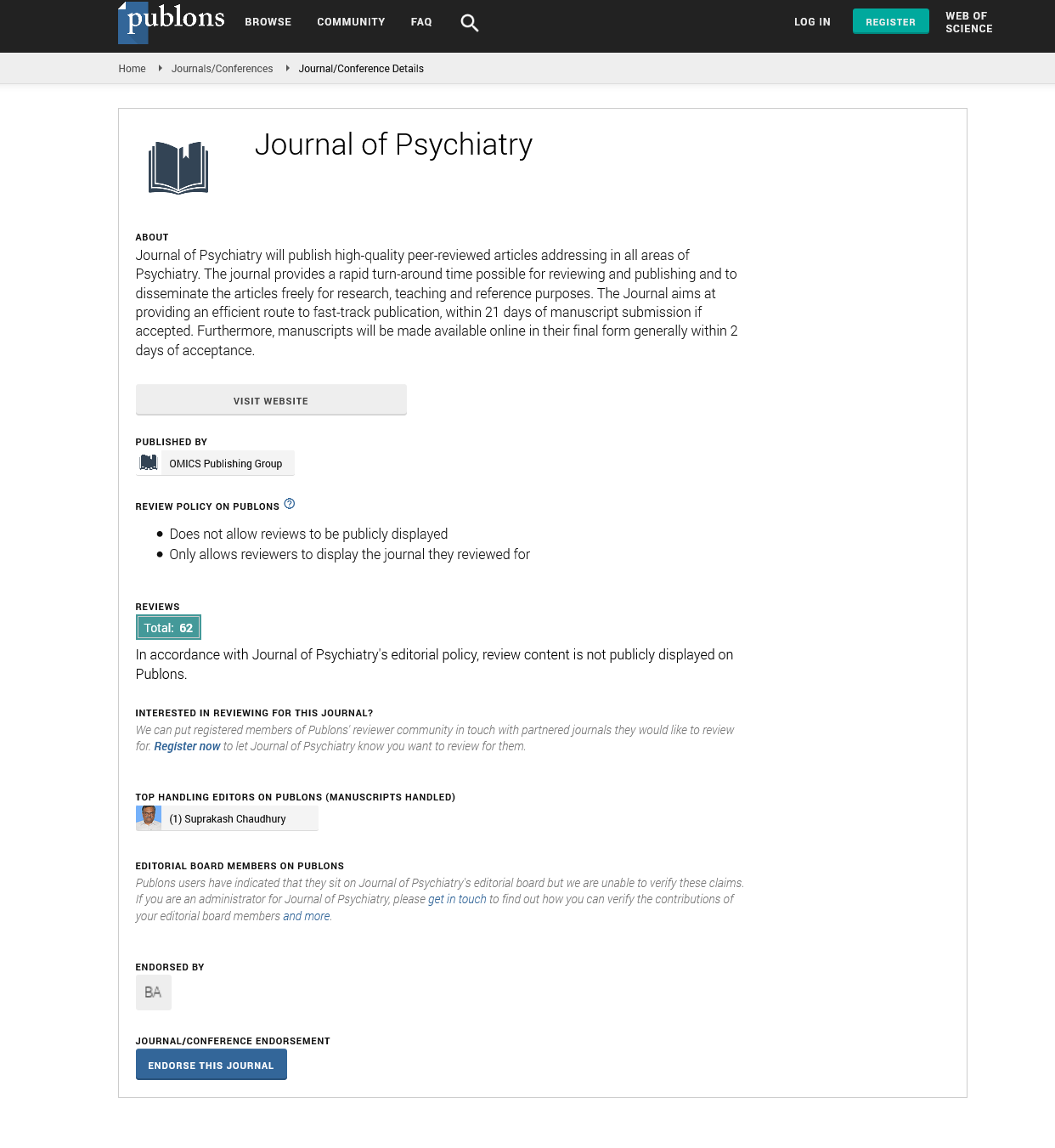Indexed In
- RefSeek
- Hamdard University
- EBSCO A-Z
- OCLC- WorldCat
- SWB online catalog
- Publons
- International committee of medical journals editors (ICMJE)
- Geneva Foundation for Medical Education and Research
Useful Links
Share This Page
Open Access Journals
- Agri and Aquaculture
- Biochemistry
- Bioinformatics & Systems Biology
- Business & Management
- Chemistry
- Clinical Sciences
- Engineering
- Food & Nutrition
- General Science
- Genetics & Molecular Biology
- Immunology & Microbiology
- Medical Sciences
- Neuroscience & Psychology
- Nursing & Health Care
- Pharmaceutical Sciences
Commentary - (2025) Volume 28, Issue 3
Technology Use and Its Psychological Impacts Among Adolescents
Olivia Chen*Received: 01-May-2025, Manuscript No. JOP-25-29989; Editor assigned: 03-May-2025, Pre QC No. JOP-25-29989; Reviewed: 17-May-2025, QC No. JOP-25-29989; Revised: 23-May-2025, Manuscript No. JOP-25-29989; Published: 31-May-2025, DOI: 10.35248/2378-5756.25.28.748
Description
The rapid increase in digital device usage among adolescents has attracted considerable attention in the field of psychiatry. Technology use, particularly in the form of smartphones, social media platforms and online games, has reshaped how young people engage with their surroundings. While these tools provide avenues for communication, learning and entertainment, they also present challenges that are becoming increasingly relevant to adolescent mental health. Studies have begun to explore both the frequency and quality of digital interactions and how these factors influence mood, selfperception, cognitive functioning and interpersonal relationships. Adolescents today are more connected than ever before. Devices are often used for messaging, browsing content, participating in group chats and maintaining online identities. Although these activities can contribute to a sense of inclusion and belonging, they may also increase pressure to conform to social expectations and maintain constant availability. Notifications, updates and online feedback loops can contribute to anticipatory anxiety and reduce the quality of offline social interactions. Over time, these patterns may lead to emotional fatigue, sleep disturbances and even dependency on virtual validation as a measure of self-worth.
One of the more consistently reported associations is between extended screen time and increased symptoms of depression and anxiety. Adolescents who spend more hours online tend to report lower mood, difficulty sleeping and reduced energy levels. It is believed that both the content consumed and the nature of the engagement play important roles in this connection. Passive scrolling, comparison with others and exposure to negative comments or unrealistic portrayals of life can reduce self-esteem and contribute to feelings of inadequacy. These experiences may have more impact during adolescence, a time when identity formation, social comparison and emotional sensitivity are at their peak. Sleep quality has also been identified as a major point of concern. The use of devices late at night can interfere with natural sleep rhythms, particularly through the suppression of melatonin production by blue light emitted from screens. Many adolescents report difficulty falling asleep or staying asleep, especially when devices are used immediately before bed. Disrupted sleep is linked with difficulty concentrating, irritability, reduced impulse control and mood instability, all of which can affect academic performance and strain peer or family relationships. Long-term sleep disturbances may even contribute to increased risk for developing more severe mood disorders.
Social media use, in particular, has raised questions about its effects on peer relationships and self-image. Platforms encourage users to present idealized versions of themselves, often filtered, curated and polished. For adolescents who are still forming their sense of self, this environment can be confusing and emotionally demanding. Constant comparisons to others’ appearances, achievements, or lifestyles may contribute to negative body image and reduced satisfaction with personal accomplishments. This is especially true for those who spend large amounts of time viewing content rather than actively engaging in meaningful online interactions or offline friendships. Furthermore, adolescents may internalize the belief that popularity and selfworth are directly tied to metrics like likes, followers, or comments. There are also increasing concerns about cyberbullying, which has become a more frequent and complex issue with the widespread use of digital communication. Unlike traditional bullying, which is often limited to specific settings like schools, online harassment can follow adolescents into their homes and remain persistent. The anonymity and detachment offered by digital platforms can embolden individuals to engage in harmful behavior that is difficult to regulate or trace. Victims of online bullying often experience increased feelings of isolation, fear, shame and emotional distress. In severe cases, prolonged exposure to cyberbullying may lead to symptoms of trauma, suicidal ideation, or self-harm behaviors.
On the other hand, it is important to acknowledge that not all technology use has negative effects. Some adolescents use digital platforms to build supportive peer networks, access mental health resources, explore creative outlets, or connect with individuals who share their interests or identities. For youth who may feel marginalized or isolated in their offline environments, the internet can provide a sense of community and belonging. Video calls, online support groups, educational content and skill-building apps can contribute positively to development and well-being, particularly when used in intentional, mindful and balanced ways. The key factor appears to be how and why the technology is used, rather than its mere presence. Parents, educators and mental health professionals are increasingly focused on promoting digital literacy, self-regulation and critical thinking among adolescents. Encouraging young people to reflect on their digital habits, set healthy boundaries and engage in meaningful offline relationships can help mitigate risks associated with excessive or harmful technology use. Creating open dialogues about online experiences also allows adolescents to seek guidance and share concerns without fear of judgment.
Citation: Chen O (2025). Technology Use and Its Psychological Impacts Among Adolescents. 28:748
Copyright: © 2025 Chen O. This is an open-access article distributed under the terms of the Creative Commons Attribution License, which permits unrestricted use, distribution and reproduction in any medium, provided the original author and source are credited

